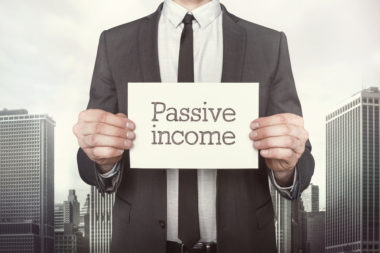If you own your own business, or are thinking about starting your own venture, it’s important that you start considering how to handle retirement. Not only your personal retirement plan, but if you intend to add any employees to your business, you’ll need to think about their retirement needs as well. In this guide, we’re going to go over several different styles of retirement plans. Each one is a bit different from the next, but they all offer self-employed individuals certain advantages that you simply can’t get with traditional retirement plans. We’ll go over each one by discussing yearly limits, who qualifies, employee/employer contribution requirements, and more.
Table of Contents
What Is a Keogh Plan?
“Keogh” is a term that is not used regularly these days. However, these plans do still exist. Essentially, the keogh plan was created for self-employed business owners, but since then several other plans have been created (that we will discuss below) that may meet business owners’ needs a bit better. Many of the plans below drew inspiration from the keogh plan, but have improved it slightly.
Keogh plans are retirement plans for the self-employed. Basically, you can set up your own retirement plan to which you can contribute funds regularly. Keogh plans usually have larger limits, which makes them desirable for individuals earning a lot of money who would like to set aside more money annually than other plans might allow. You have control over your contributions, which may be sporadic, up to an annual limit of $215,000 (up to 100 percent of your self-employment earnings) or else requires more consistent deposits — like a traditional 401(k) (the limit on these types of plans is $54,000 annually).
Since the term isn’t widely used anymore, you may be able to find this style of plan in your search, but just going by a different name. As I mentioned, most of the plans on this list will have similarities with the keogh model. Many of them are made flexible and allow you to personalize your saving goals.
Self-Employed Pension Plans and SEPs
What Is an SEP?
A Simplified Employee Pension (SEP) is a term used to describe a retirement plan that can be used for self-employed individuals and/or for small business owners. If you’re self-employed, you can choose an SEP, even if you have no employees working for you. If you are your own boss, but you also have employees, you can use this plan for them as well.
The Simplified Employee Pension plan is a really an Individual Retirement Account (IRA), rather than a defined benefits plan like traditional pensions, meaning employers don’t have the same obligation to beneficiaries. The SEP allows you to contribute up to 25 percent of your net earnings to your retirement plan. As of 2018, the annual limit that you can contribute is $55,000. The benefits of this plan are that it is low cost to start up (and maintain), and it allows fairly large contributions annually. It is a simplified plan, and requires that the employer be the only entity making contributions to the plan, which are tax deductible. This plan does not allow for employee contributions, however all funds are immediately vested.
How to Set Up an SEP or Self-Employed Pension Plan
First, you will need to choose a bank that you trust to house all of your contributions. You will need to speak with them about writing up an agreement that details the specifics of your plan. Namely, you’ll want your plan to show that you, the employer, will be the sole contributor to the plan(s). After that, you’ll just need to set up individual accounts for yourself and each of your employees and start depositing money.
The IRS does have specific requirements that you must list in your agreement, specifically, they need to know what type of contribution formula you plan to follow (and they have an example that you can use). Each employee must receive the exact same contribution to their retirement plan, so make sure that you’re familiar with that.
Self-Employed IRA and 401(k) Plans
IRAs – Traditional & Roth
The term IRA means Individual Retirement Agreement. IRAs are often categorized as Roth or Traditional plans. Both of these often have a much lower contribution limit than a 401(k) and are easy to set up. For example, most standard self-employed IRA accounts will have an annual contribution limit of $5,500 and can be set up quite effortlessly through many different firms.
However, the difference between a Roth or Traditional IRA simply has to do with when taxes are applied. Roth contributions are taxed before the funds enter your account, which means when you remove the funds from your account you usually don’t have to pay taxes again. Traditional accounts allow the money to be contributed tax-free, meaning what you save doesn’t count toward your annual income, but you may be subject to taxes when you withdraw. IRA accounts are sometimes used in conjunction with a 401(k) plan because they are your own independent retirement account, which means your employer isn’t required to contribute money to your account.
401(k) – Traditional & Solo
As for a 401(k), these accounts are usually offered through an employer, which means the business owner matches part (or all) of the contributions being made to all retirement accounts. Employees can choose how much they would like to contribute. Commonly, they are asked to choose a percentage of their pay, usually something between one and ten percent. Standard employee contributions fall between two and six percent, but older employees qualify for larger deposits. It’s up to the employer to decide how much of that they would like to match. Taxes are usually paid after the money has been removed from the account, but sometimes there are exceptions to that rule.
If you’re self-employed, you’ll likely be looking at a Solo 401(k), which is for business owners with no other employees. As the owner of the business, you get to act as an employee and the business owner. In a Solo 401(k) program you can contribute as you normally would with a 401(k) plan and also contribute additional funds as the business owner. So, you would contribute your two to six percent (or more if you’re closer to retirement age) and then you could match your own contributions.
Employee contributions for this plan cap out at $18,500 annually, but as the employer, you can contribute an additional sum up to 25 percent of your business compensation (employee and employer contributions totalling $55,000). As you can see, the biggest perk with this plan has to do with your ability to double contributions to your retirement plan. In most other situations, annual contributions would be far more limited.
SIMPLE IRA
Similar to the 401(k) plan, there is another small business or self-employment retirement option called the SIMPLE IRA (or the Savings Incentive Match Plan for Employees Individual Retirement Account). This plan has similar limits and guidelines as a 401(k) plan, but the plan is simplified. You are required to match employee contributions up to three percent of everyone who is enrolled, or you can choose to give all employees a two percent contribution. When you choose the latter option, employees who aren’t enrolled in the plan are still entitled to the two percent contributions that you make.
This plan is great for businesses with a small number of employees (up to 100) because it’s easy to keep track of what contributions are being made, and/or you can simply set a standard employer contribution across the board. The total contributions made to each employee account may not exceed $18,500. As you can see, the total of employee/employer contributions is much lower than it would be with a 401(k).
How to Set Up a SIMPLE IRA or 401(k) Plan
Both of these plans are quite easy to set up with most brokerages or firms, however the steps involved will differ a bit. 401(k)s are not offered through every brokerage, so you might have to do some digging to find a brokerage that suits your needs. In addition, the IRS has certain restrictions surrounding 401(k) accounts. You must declare to the IRS when or if your account reaches over $250,000. And you’ll need to continue doing so every year that your account remains at or exceeds that total.
SIMPLE IRA accounts are a bit easier to find and set up, but while you can start up any traditional IRA account quite easily, SIMPLE accounts are a bit more complicated. SIMPLE accounts are meant for business owners and their employees and as such, the paperwork is more detailed. Instead of just accounting for your own contributions, with a small annual limit, you’re accepting contributions from the business and employees. The process will reflect these additional steps.
Profit-Sharing Plans
What Is a Profit-Sharing Plan?
A profit-sharing plan allows much more flexibility within a retirement package. Employers can choose what kind of contributions they would like to give to their employees. Based on their profit for the year, they may also decide to make no contributions at all. If you have just a few employees, this is a great plan for companies that are still growing and are experiencing unexpected fluctuation in profits.
The total employer contribution to these accounts cannot exceed $54,000 per year. In addition, this plan relies on profit from the employer to fulfill retirement plan savings, which means that employees cannot contribute to this type of plan.
How to Set Up a Profit-Sharing Plan
Starting a profit-sharing plan can be extremely beneficial for small businesses, but the paperwork can be lengthy. In order to start a profit-sharing plan, the company profits must be placed into a trust and appointed a trustee. Opening up a trust account can be complicated and fairly expensive. You will then formulate a written plan for how you’d like to compensate your employees’ retirement plans. From there, you must keep detailed records of your company’s profits and yearly chosen contributions to employee accounts.
Money Purchase Plans
What Is a Money Purchase Plan?
Money purchase plans are quite similar to profit-sharing plans, but with one major difference — the total that you base retirement contributions on is not the company profit, but individual employee salaries. Both employees and employers can make contributions to the account, but employers choose a fixed amount, based on an employee’s salary, that they would like to match into their retirement account. In this sense, money purchase plans are very similar to a 401(k), except retirement contributions can be better controlled based on an individual’s salary, not an arbitrary percentage. As such, this is another great option for small businesses with few employees.
How to Set Up a Money Purchase Plan
There are a few different aspects that go into setting up a money purchase plan. First, a written proposal must be sent over to a brokerage. It must detail an even attention to retirement plans, regardless of salary. This requires regular investigations to ensure that a company is not favoring certain employee plans over others, which can be costly. There is also a yearly minimum amount that must be deposited into employee accounts. If that minimum is not met, the employer could incur some steep fees.
There you have it! We have detailed seven different types of retirement plans that are all great options for small business owners or self-employed individuals. As you have read, each plan has its own set of restrictions and guidelines that vary slightly from plan to plan. So, you’ll really want to make sure that you first qualify for a particular plan, but that it will be beneficial to you and your possible employees over time. These are truly the best options out there for self-employed individuals who are looking to make smart retirement fund decisions.
Image Source: https://depositphotos.com/





